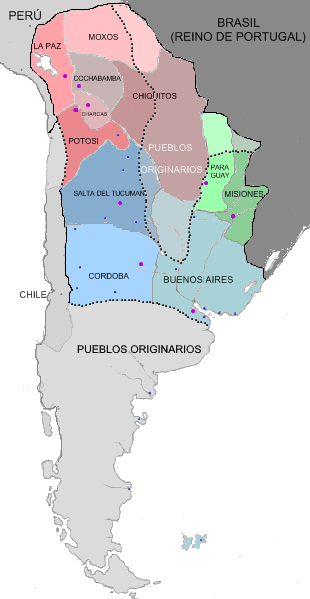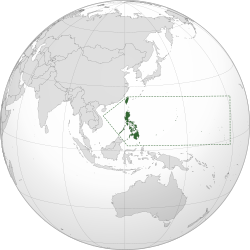
Miguel López de Legazpi, also known as El Adelantado and El Viejo, was a Spanish conquistador who financed and led an expedition to conquer the Philippine islands in the mid-16th century. He was joined by Guido de Lavezares, relative Martin de Goiti, friar Andrés de Urdaneta, and his grandsons Juan and Felipe de Salcedo, in the expedition. Legazpi established the first Spanish settlement in the East Indies after his expedition crossed the Pacific Ocean, arriving in Cebu in 1565. He became the first Governor-General of the Spanish East Indies, which was administered from New Spain for the Spanish crown. It also encompassed other Pacific islands, namely Guam, the Mariana Islands, Palau, and the Carolinas. After obtaining peace with various indigenous tribes and kingdoms, he made Cebu City the capital of the Spanish East Indies in 1565 and later transferred to Manila in 1571. The capital city of the province of Albay bears his name.

The Mariana Islands, also simply the Marianas, are a crescent-shaped archipelago comprising the summits of fourteen longitudinally oriented, mostly dormant volcanic mountains in the northwestern Pacific Ocean, between the 12th and 21st parallels north and along the 145th meridian east. They lie south-southeast of Japan, west-southwest of Hawaii, north of New Guinea and east of the Philippines, demarcating the Philippine Sea's eastern limit. They are found in the northern part of the western Oceanic sub-region of Micronesia, and are politically divided into two jurisdictions of the United States: the Commonwealth of the Northern Mariana Islands and, at the southern end of the chain, the territory of Guam. The islands were named after the influential Spanish queen Mariana of Austria following their colonization in the 17th century.
Martín de Goiti was a Spanish conquistador and one of the soldiers who accompanied the Spanish voyage of exploration to the East Indies and the Pacific in 1565, in search of rich resources such as gold, spice and settlements. They were seeking to find a route to the islands were the previous Spanish expeditions led by Ferdinand Magellan had landed in 1521, and Ruy López de Villalobos in 1543.
A Real Audience, or simply an Audience, was an appellate court in Spain and its empire. The name of the institution literally translates as Royal Audience. The additional designation chancillería was applied to the appellate courts in early modern Spain. Each audiencia had oidores.

The Council of the Indies, officially the Royal and Supreme Council of the Indies, was the most important administrative organ of the Spanish Empire for the Americas and those territories it governed, such as the Spanish East Indies. The crown held absolute power over the Indies and the Council of the Indies was the administrative and advisory body for those overseas realms. It was established in 1524 by Charles V to administer "the Indies", Spain's name for its territories. Such an administrative entity, on the conciliar model of the Council of Castile, was created following the Spanish conquest of the Aztec empire in 1521, which demonstrated the importance of the Americas. Originally an itinerary council that followed Charles V, it was subsequently established as an autonomous body with legislative, executive and judicial functions by Philip II of Spain and placed in Madrid in 1561.

The Captaincy General of the Philippines was an administrative district of the Spanish Empire in Southeast Asia governed by a governor-general as a dependency of the Viceroyalty of New Spain based in Mexico City until Mexican independence when it was transferred directly to Madrid.

The Royal Audiencia of Santiago was an Audiencia Real or royal law court that functioned in Santiago de Chile during the Spanish colonial period. This body heard both civil and criminal cases. It was founded during the 17th century and abolished in 1817.
The Real Audiencia of Charcas was a Spanish audiencia with its seat in what is today Bolivia. It was established in 1559 in Ciudad de la Plata de Nuevo Toledo and had jurisdiction over the Governorate of Charcas, Paraguay and the Governorate of the Río de la Plata, modern-day Uruguay and northern Argentina. The audiencia oversaw the incredible silver output of the mines at Potosí. It was part of the Viceroyalty of Peru until 1776, when it was transferred to the newly created Viceroyalty of the Río de la Plata and began to be referred to as Upper Peru.

The New Kingdom of Granada, or Kingdom of the New Granada, was the name given to a group of 16th-century Spanish ultramarine provinces in northern South America governed by the president of the Royal Audience of Santafé, an area corresponding mainly to modern-day Colombia. The conquistadors originally organized it as a province with a Royal Audience within the Viceroyalty of Peru despite certain independence from it. The audiencia was established by the crown in 1549.

The Real Audiencia of Quito was an administrative unit in the Spanish Empire which had political, military, and religious jurisdiction over territories that today include Ecuador, parts of northern Peru, parts of southern Colombia and parts of northern Brazil. It was created by Royal Decree on 29 August 1563 by Philip II of Spain in the city of Guadalajara. It ended in 1822 with the incorporation of the area into the Republic of Gran Colombia.

The German–Spanish Treaty of 1899, signed by the German Empire and the Kingdom of Spain, involved Spain selling the majority of its Pacific possessions not lost in the Spanish–American War to Germany for 25 million pesetas.
The Real Audiencia of Mexico or Royal Audiencia of Mexico was the highest tribunal of the Spanish crown in the Kingdom of New Spain. The Audiencia was created by royal decree on December 13, 1527, and was seated in the viceregal capital of Mexico City. The First Audiencia was dissolved by the crown for its bungling and corruption and the crown established the Second Audiencia in 1530. This was supplanted by the Viceroyalty of New Spain in 1535. A new Audiencia was created in Guadalajara in western Mexico in 1548.
The Real Audiencia of Guadalajara, was the highest tribunal of the Spanish crown in what is today northern Mexico and the southwestern United States in the Viceroyalty of New Spain. It was created by royal decree on February 13, 1548, and was originally located in Compostela and permanently seated in Guadalajara in 1560. Its president was the chief political and executive officer of the district, subordinated only to the Viceroy.

The Real Audiencia de Buenos Aires, were two audiencias, or highest courts, of the Spanish crown, which operated in Buenos Aires. The jurisdiction of the first covered the territory of the Governorate of the Río de la Plata and operated from 1661 to 1671. The second began to function in 1783 and had jurisdiction over the parts of the Viceroyalty of the Río de la Plata not covered by the Audiencia de Charcas, that is to say the intendancies of Buenos Aires, Córdoba del Tucumán, Salta del Tucumán and Paraguay. In 1810, after the May Revolution, it was suspended, and in 1813 the Assembly of the Year XIII permanently abolished it. The Audiencias operated in the city's cabildo building.
The Real Audiencia of Manila was the Real Audiencia of the Spanish East Indies, which included modern-day Guam, the Northern Mariana Islands, Palau, Micronesia and the Philippines. Similar to Real Audiencias throughout the Spanish Empire, it was the highest tribunal within the territories of the Captaincy General of the Philippines, a dependency of the Viceroyalty of New Spain.
The Real Audiencia and Chancery of Lima was a superior court in the New World empire of Spain, located in the city of Lima, capital of the Viceroyalty of Peru. It was created on November 20, 1542 as was the viceroyalty itself, by the Emperor Charles V. The Audiencia began functioning in 1543 and initially had jurisdiction over the entire viceroyalty—virtually all of Spanish-controlled South America and Panama. Later other audiencias were established in the Viceroyalty. The Audiencia functioned until 1821 when the forces of José de San Martín entered Lima.
The Royal Audience and Chancery of Panama in Tierra Firme was a governing body and superior court in the New World empire of Spain. The Audiencia of Panama was the third American audiencia after the ones of Santo Domingo and Mexico. It existed three times under various guises since it first creation in 1538 until its ultimate abolition in 1751.
The Real Audiencia of Santiago de Guatemala, simply known as the Audiencia of Guatemala or the Audiencia of Los Confines, was a Real Audiencia in the Imperial Spanish territory in Central America known as the Captaincy General of Guatemala (1609-1821). The Audiencia's presiding officer, the president, was the head of the government of the area. The Audiencia was initially created by decrees of November 20, 1542 and September 13, 1543, and had its seat in Antigua Guatemala.

Miguel Lino de Ezpeleta was a Spanish criollo born in Manila who served as the Bishop of Cebu from 1757 until his death in 1771. Consequently, he assumed the position as the governor-general from 1759 to 1761 during Spanish intervention to the Seven Years' War and prelude to the occupations of Manila and Cavite.

José Torralba Rios (1653-1726) was a Spanish oidor and licentiate who served as the 36th Governor-General of the Philippines. He is the eighth Governor-General of the Philippines from the Real Audiencia of Manila.




















